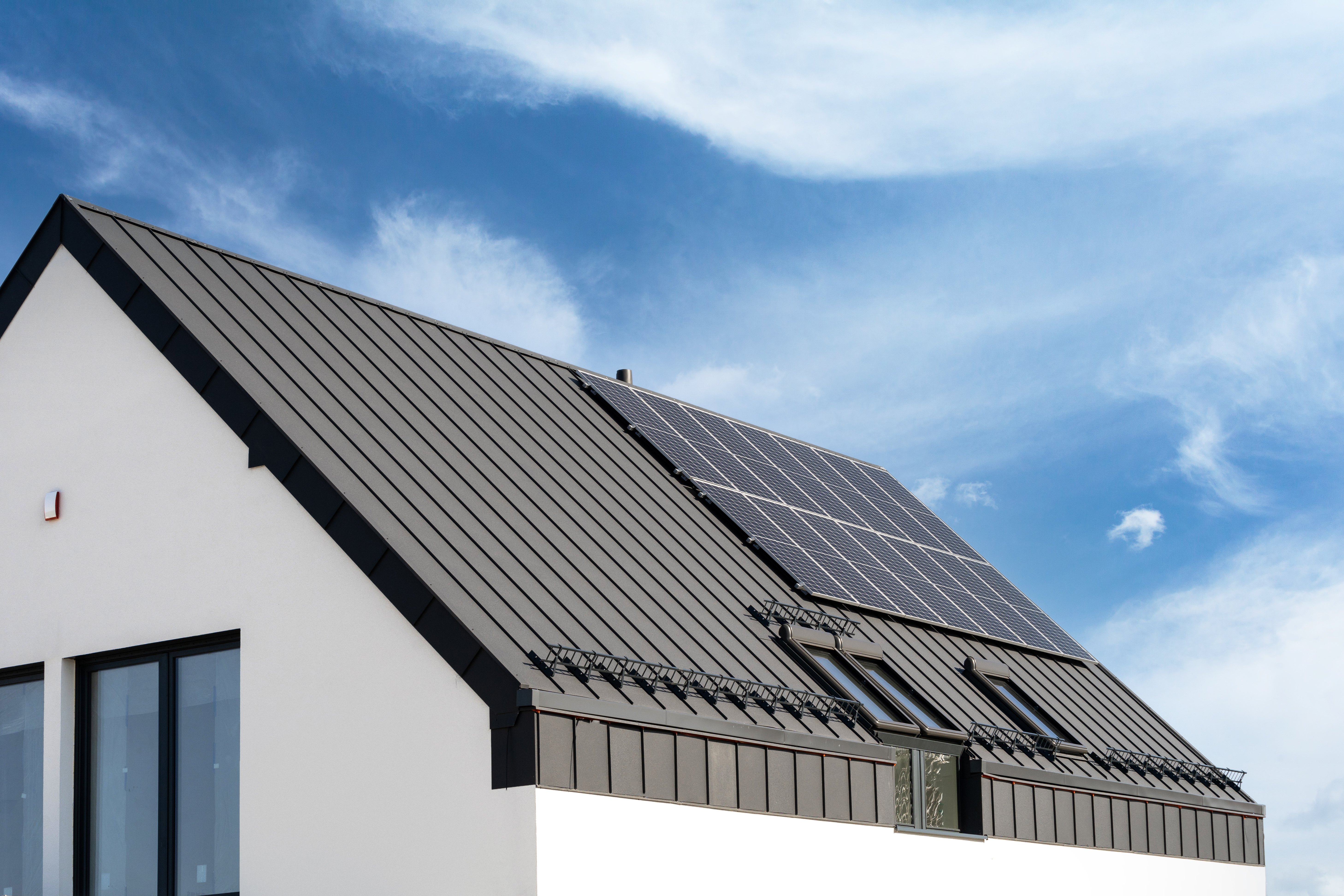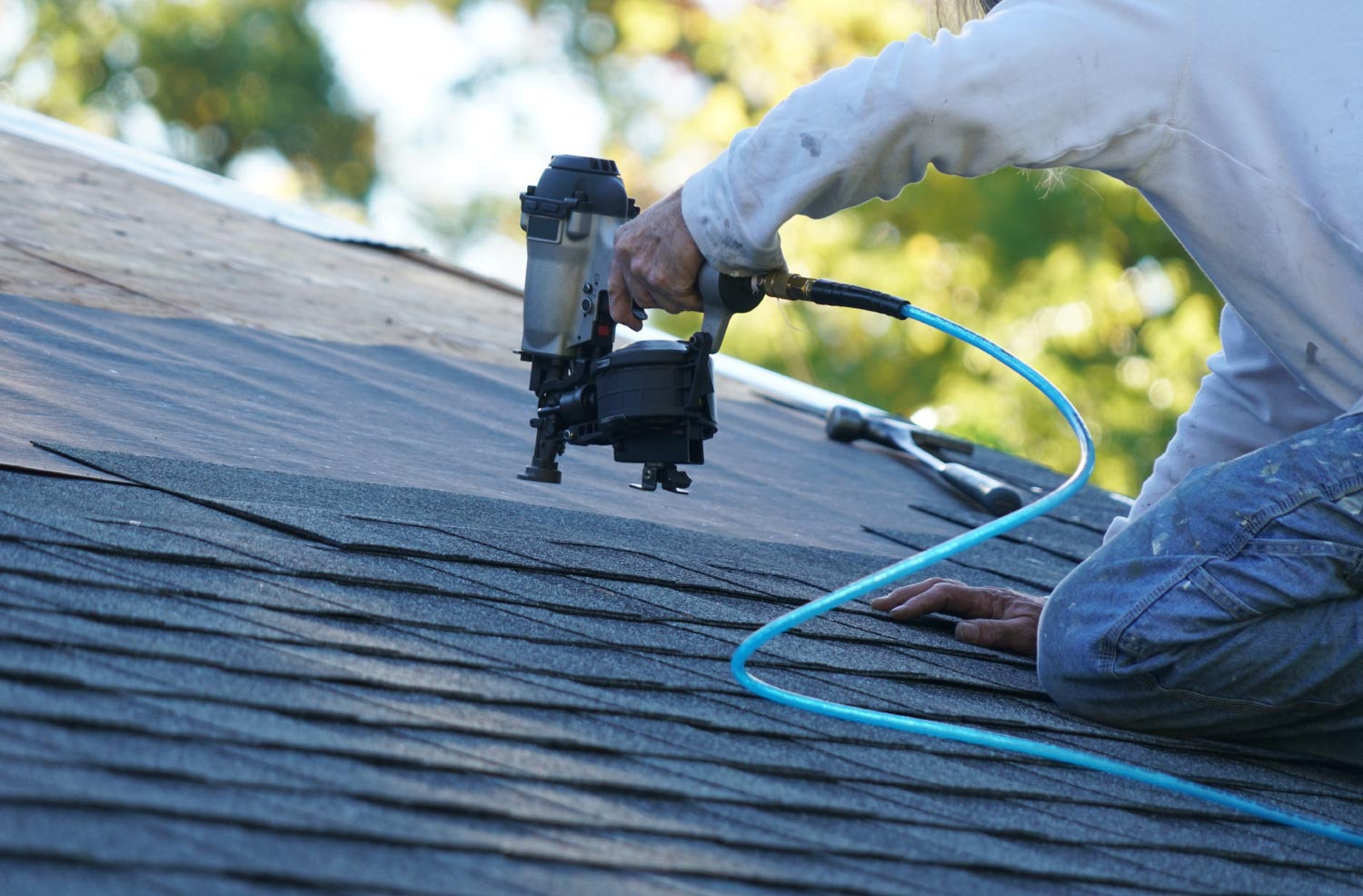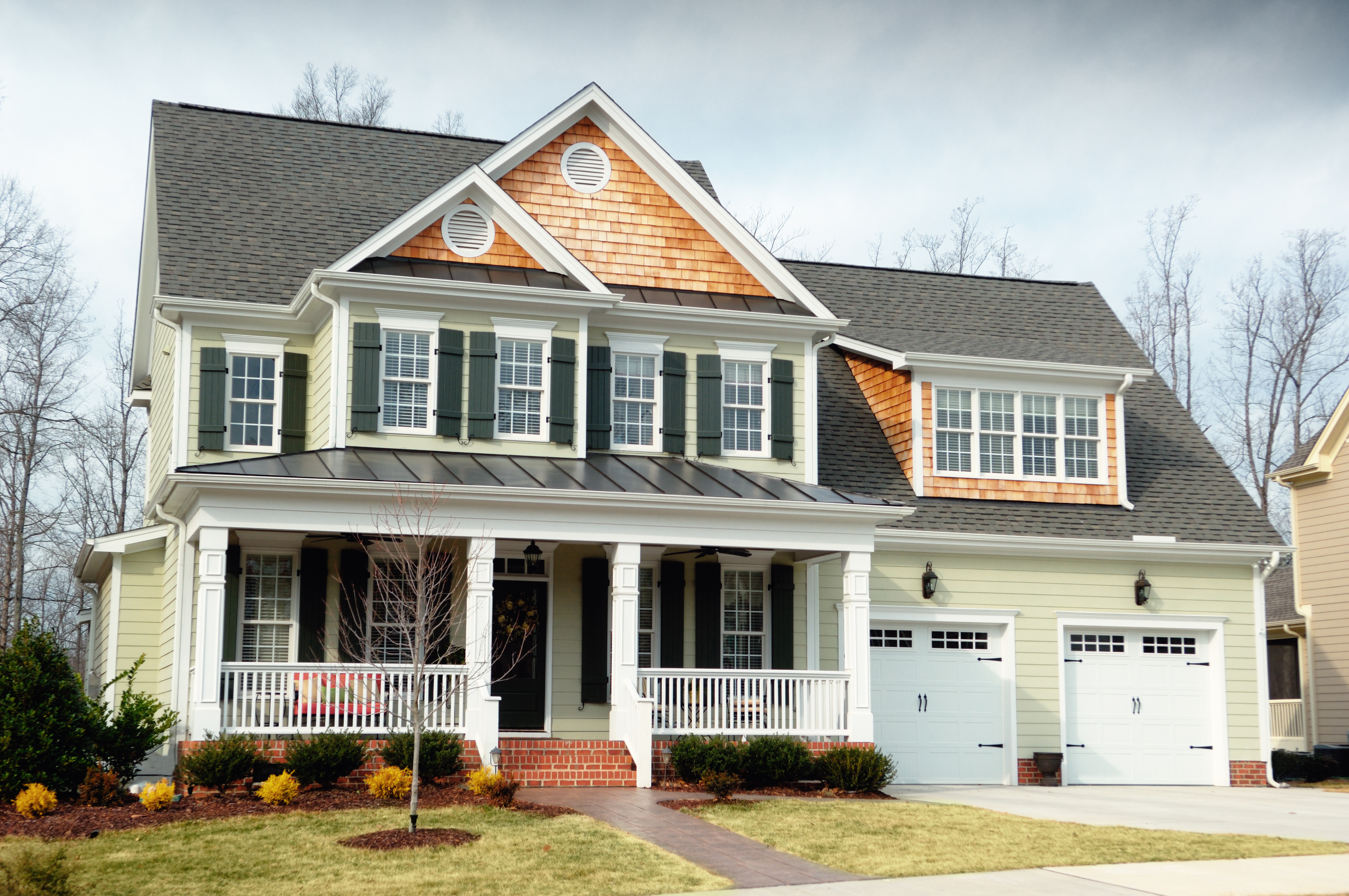
A metal roof can defend your home against Ohio’s varying weather conditions. Learn how much a metal roof costs in Columbus, OH.
A pro should always handle roofing work, but you may be curious what tools they're using


Roof repair requires many materials, including safety precautions like a fall protection kit.
Roofers need crowbars and flat head shovels to remove existing shingles.
A tarp is vital to roof repairs because you cannot predict the weather, nor risk the roof deck getting wet.
Roof vents are an essential component of any roof repair job.
The roof repair process takes professionals less than one day.
If you have noticed that your roof is looking a little worse for wear, you may be considering clambering up there to conduct some repairs yourself. You should quash that impulse. Roof repair and replacement are jobs best left to roofing professionals. Each roof repair project takes skill, as well as particular materials and tools.
If you are curious, however, about the tools of the trade, or want to be able to talk shop with your local roofer, then you are in luck. Below, we will break down all of the roof repairing materials roofers use, as well as what you might need to know before embarking on a roof repair project.
One of the most important pieces of equipment for roofers is pretty simple—a way to get up and down a roof. Roofers often use ladders, scaffolds, or shingle lifts to access a home’s roof safely and efficiently.
Roofing can be very dangerous if you are not properly protected, but a good fall protection kit can go a long way toward ensuring that roofers are safe and prepared for their job. Fall protection systems usually include a reusable roof anchor, safety harness, rope lifeline, and shock-absorbing lanyard. If you have a steep roof, you might ask your roofer to leave a roof anchor in place for future repairs.
Aside from a safety harness, ensuring comfortable footing on the roof is another important safety consideration. Roofers often use toe boards, which have roof jacks that slide in and attach under shingles, to travel safely along the roof.
Roofers use chalk lines to make sure that shingles are straight and symmetrical. This step helps to ensure a snug fit between shingles without any unexpected gaps or holes.
Removing old shingles and nails sometimes requires more than a little elbow grease. Roofers carry crowbars or utility bars in order to dislodge stubborn nails.
Roofers use flat head shovels to remove existing roof shingles. In order to be eligible for the roof warranty and to make sure your roof looks neat and tidy, roofers should remove all existing shingles when doing a roof replacement. A flat head shovel makes the job of removing these shingles go more quickly.

If you are only replacing a few shingles, roofers can use a hammer to attach them. But if you plan on replacing your whole roof, roofers typically use a power nailer to speed installation.
It is important to use the proper nails in order for a roof to perform as expected. Roofers should follow the Asphalt Roofing Manufacturers Association guidelines when selecting nails for roof repair or replacement.
“Generally we use 1.25-inch coil nails on an asphalt roof installation,” says Ami Feller of Feller Roofing. “If you have exposed soffit, especially common on older homes, make sure that the nail won't ruin the soffit. Code requires that nails go completely through the roof deck in order to hold. If you are worried, you should bring this to the attention of your roofing contractor before they start the project.”
Nobody likes a leaky roof. Leaks from above are more than just unpleasant; they can also cause water damage and pose a safety issue for your home. Roofers apply sealant around areas where water can penetrate the roof, such as the flashing, roof vents, chimney, and skylight, to help prevent leaks in your roof. It is important to note that sealant is not a permanent solution for a leaky roof, as it breaks down under UV light in about three years.
Rainy weather is not ideal for roof repair, but sometimes you just cannot control Mother Nature. That is why roofers typically include a tarp among their supplies. They use the tarp to cover the roof to keep the deck from soaking up water and delaying your project, since you cannot lay shingles on wet OSB or plywood.
A handy utility knife is another staple in a roofer’s toolbelt. Roofers use these knives to cut or trim shingles to the correct shape and size. Most roofers who install shingles use a hook blade in their utility knife, which cuts through the face of a shingle with ease.
An aluminum drip edge allows water to flow freely off the roof’s edge without damaging the fascia board.
When repairing or replacing a roof, roofers install flashing to help protect against water damage. Flashing is a piece of metal installed underneath the siding and shingles where the vertical part of the home meets the horizontal, or sloped, part of a roof. It helps the water move freely toward the edge and off the roof. Without flashing, water will penetrate the shingles and, over time, rot the wood beneath. Most roof leaks are caused by improper flashing.
Roof vents prevent a roof from getting too hot and prevent condensation that could cause premature roof deterioration or mold growth. Too much condensation causes a roof’s shingles to rot. It can cause them to curl or become loose, reducing your roof’s effectiveness.
It is recommended to have roof ventilation for every 300 square feet of your attic, so for a 3000-square-foot attic, you would need ten roof vents—five for intake and five for exhaust.
Pipe boots are pieces of rubber that fit securely around the hole in the roof created for ventilation pipes, such as those that release gas or moisture from the home. Because roofers must cut a hole in the roof, it is important to seal the area to prevent moisture or air from leaking into the home.
Roofers will examine the deck from the attic and check for soft spots to determine whether they need to replace any rotting or damaged wood. If so, they will use plywood or oriented strand board (OSB) for the task.
Underlayment is a thin sheet of material that helps to protect a roof against the elements. Felt paper, ice shields, and water shields are all common forms of underlayment. Underlayment acts as a second layer of defense, protecting your home from potential water damage.
Roofing is not a project that you should complete by yourself. Professional roofers come prepared with training and all of the equipment they need to do a good job. If your roof is damaged or needs repair, you should contact a roof repair company near you.
The roof repair process is a lengthy one, but when done by professional roofers, it can be completed in less than one day. Here is what to expect.
A day or two before your roof installation, the contractor will have all roofing materials delivered. It is important to keep them in a cool, dry place so they can acclimate to the current environment for proper installation.
Roofing contractors will properly prepare the area for roof replacement, including laying a tarp on the ground, protecting any landscaping, removing any non-permanent items from the area, and setting up a dumpster for discarded materials.
Roofing contractors will next tear off the old roofing material, unless they plan to install the new roof over the existing one. They may tear off the shingles, or if you are having an entirely new deck installed, they will remove the entire structure.
Roofing contractors work in sections on your roof, so as soon as they tear off one section, they will immediately install the new roofing section. They first lay the underlayment and then the drip edge. Next they install the shingles and complete it with ridge capping and any necessary attic ventilation.
A big part of the roof installation process is the cleanup. Not only must contractors clean up the roof and yard, but the gutters, too. It is important to remove any debris from the gutters and downspouts to prevent any backups.
From average costs to expert advice, get all the answers you need to get your job done.

A metal roof can defend your home against Ohio’s varying weather conditions. Learn how much a metal roof costs in Columbus, OH.

Dealing with a visibly damaged roof or leak? Learn about roof repair costs in Columbus to see how much you’ll need to budget for a permanent solution.

Learn about roof replacement costs in Columbus and what factors are at play to budget accurately and make sure you’re getting a fair price.

Do roof vents work? Is roof ventilation necessary? Can I have too much ventilation? Here are the top 11 myths about roof vents and the real answers you deserve.

You may wonder what fascia is on a house. Our guide explains what you need to know about this important part of your roof and what purpose it serves.

Homeowners can fill a gap between their roof and wall with sealant or wire mesh. Here are three steps to help you get the project done safely.